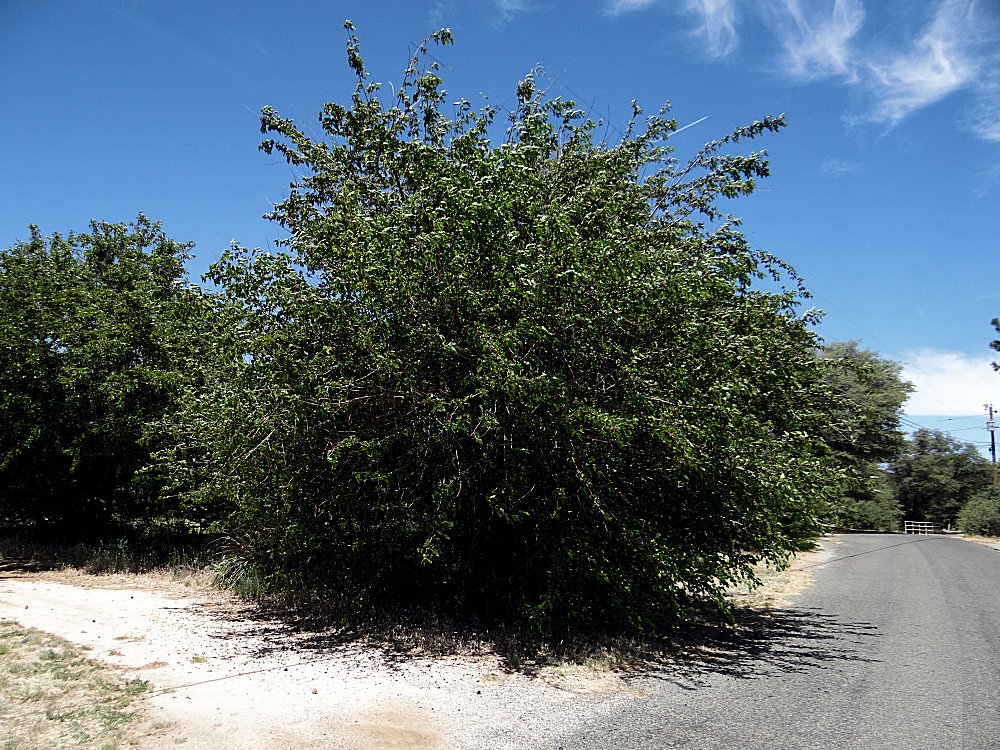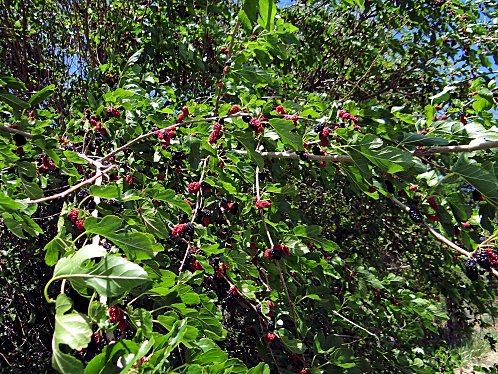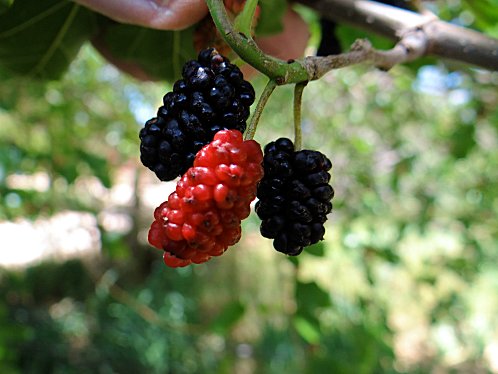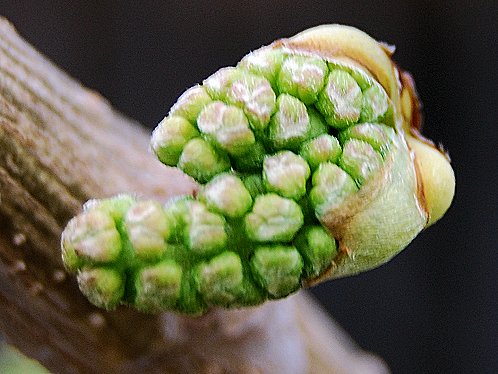Arizona Vegetable & Fruit Gardening
For The Arizona Desert Environment.
Pictures, Photos, Images
Descriptions, Information, & Reviews.
We Are Proud Of Our SafeSurf Rating!
 |
| White Mulberry Fruit Tree. Morus alba. About 24 Feet High. 15 Years Old. Ripe Fruit. Photo Taken May 24, 2013 In Yarnell, Arizona. |
|---|
 |  |
| White Mulberry Fruit. Morus alba. Photo Taken May 24, 2013 In Yarnell, Arizona. | White Mulberry Fruit. Morus alba. Photo Taken May 24, 2013 In Yarnell, Arizona. |
|---|---|
 |  |
| White Mulberry Fruit. Morus alba. Photo Taken May 24, 2013 In Yarnell, Arizona. | White Mulberry Fruit. Morus alba. Photo Taken May 24, 2013 In Yarnell, Arizona. |
 |  |
| Flower Bud. Courtesy: Wikipedia. White Mulberry Fruit Tree. Morus alba. Photo Taken May 24, 2013 In Yarnell, Arizona. | Flowers. Courtesy: Wikipedia. White Mulberry Fruit Tree. Morus alba. Photo Taken May 24, 2013 In Yarnell, Arizona. |
White Mulberry Fruit Tree.
We wish to thank Wikipedia, the free encyclopedia, for some of the information and images upon our page. We share images & information with Wikipedia.
Both Morus alba, white mulberry, and Morus nigra, black mulberry, are native to China. But, Morus rubra, red mulberry, is native to North American species. Its native range is from the mid-Atlantic into Florida, and west into Nebraska and Texas. Morus nigra is cultivated throughout all of Europe because of its large, sweet-tart fruit. The genus name, Morus is derived from the Latin �mora,� which means �delay,� which refers to the often times. late leafing habit of the mulberry. All Mulberries are members of the Moraceae family, which includes the fig, breadfruit and sassafras trees. Some mulberry species are bushes, but most are trees, about 30 - 40 feet in height. Some can grow to about 50 feet in height. They are fast growing & long lived, & deciduous. The leaves of Mulberries are; alternate, simple, lobed to undivided. The leaves on one tree can be both lobed and unlobed. Mulberry plants can have both monoecious flowers (male and female flowers on one plant), or dioecious flowers (male and female flowers on separate plants). Many mulberry trees are self-pollinating. They are even known to change sex. Mulberries have inconspicuous flowers in both the early & late spring on both the current season�s wood and upon the spurs of old wood. Mulberry fruits, ripen in both the early & late spring. The fruits, are small fleshy drupes, resembling a blackberry. The fruits color ranges from white to lavender to red and purplish-black. Some mulberries are seeded, though most are not. Their flavor is mild and very sweet. Eve DeLange blends them into her morning smoothies. But beware: their dark fruit stains almost anything it contacts! If you buy a mulberry tree, we suggest that you buy one that is self-fruitful which also has good tasting, seedless fruits.
Here are some links to the Nature Hills Nursery; where you can order some of their very high quality Mulberry Trees. If you click, there is no obligation to buy! You will leave delange.org. NOTE: These are High Quality Speciality Trees. They are not usually found at the typical Big Box Stores!
Mulberries were brought into other parts of the world for the same purpose and have become naturalized almost everywhere.
Planting Mulberry Trees In Arizona:
We suggest that you decide on the site for your tree/s some months in advance of planting. Mulberries tolerate any conditions except wet soils. They withstand drought and salt conditions, making them a good urban or seaside planting. They do best with full sun but tolerate light shade. Allow a space of 25 to 30 feet around each tree. Keep in mind that mulberry branches can be brittle. The soils in Arizona are generally speaking, great for Mulberry Trees. NOTE: Mulberry Trees have shallow roots that often rise up out of the soil and can be the cause of people tripping over them. They can also run under sidewalks and driveways. Causing buckling of the cement. Therefore, keep that in mind when planting them. NOTE: Mulberry Fruit stain badly, avoid planting mulberries near walkways and driveways or where fruit stains can be be tracked into a dwelling. 1. Decide on which tree to plant. Fruit trees that thrive in Arizona include the apple, cherry, apricot, fig, mulberry, nectarine, peach, pear, Asian pear, persimmon, Asian plum and Japanese plum. Although there are general guidelines that apply to any fruit tree growing in Arizona, you should also learn the specific requirements of the tree you plant. 2. Choose a nursery tree. The University of Arizona College of Agriculture and Life Sciences recommends you buy a year-old tree with a trunk that's � to � inches in diameter. Select a fruit tree without broken branches or other signs of injury. If you can, check the roots while still in the nursery or soon after you take the tree home. Save the receipt in case you have to exchange it. Roots with soft spots, bugs, mildew and other irregularities are diseased and can't support a tree's development. In the arid Arizona climate, roots should also be irrigated frequently. At the nursery, touch the soil to verify it's moist. If the tree is bare-root, check that the root ball is in a moist medium. 3. Find a sunny planting site with well-drained soil. Test drainage by digging a hole as deep and wide as the tree's root ball. Then, put 5 gallons of water in it. One hour later, fill the hole with water again. If the soil has absorbed the 10 gallons of water within 24 hours, your soil drains well. Let most of the moisture evaporate before you plant your fruit tree. 4. Schedule the planting. In Arizona, plant bare-root fruit trees in February or March. Transplant container trees in September or October. Most fruit trees for sale have bare roots. Keep store-bought trees in the shade and their soil moist until you're ready to plant them. 5, Enlarge the planting hole you made in Step 3 to five times the width of the root ball, but keep it at the same depth. On the bottom, pile soil in the center to form a small mound in the hole. 6. Loosen and cut broken or discolored roots. Trim longer roots to the same size as the others. 7. Put the tree in the hole with the center of the root ball on the mound. Spread the roots down and around it. Backfill the hole with the topsoil you dug out. 8. Water the soil thoroughly and add a 4-inch layer of mulch around the base of the tree. Continue to water every two days during the growing season, giving your tree about 5 gallons of water a week. The University of Arizona Extension Service also recommends you paint the tree trunk with white latex paint to protect it from sunburn. 9. Prune your fruit tree right after you plant it. Cut the top 1/3 and train it into the shape best for the type of tree you have. For example, use the central leader method for apples, mulberries, and pears, and open center if you have peaches and nectarines. Your nursery or extension office offers advice on the right training method for your fruit tree. 10. Fertilize the soil when new growth begins after planting and in the beginning of every growing season, February to March in Arizona. The type and amount of fertilizer depends on the tree you have, but all fruit trees need nitrogen. In addition, spray a formula of chelated zinc and iron on the leaves. 11. Control pests and treat disease. In Arizona, the codling moth and peach tree borers are among about a dozen common insects that attack fruit trees. Diseases include fireblight, brown and crown rot, and powdery mildew. If something is affecting your tree's appearance and development, get help from your local extension office in identifying the problem and treating it.
Pruning Mulberry Trees:
Proper training and pruning of fruit trees is essential to the development of a strong tree framework that will support fruit production. Properly shaped trees will yield high-quality fruit much sooner and will live significantly longer. Regular pruning and training will also maximize light penetration to the developing flower buds and fruit. Additionally, a well-shaped tree canopy permits adequate air movement through the tree, which promotes rapid drying to minimize pest problems. Prune mulberry trees to establish a healthy branching structure. They should be free of narrow crotches, or too many branches growing close together. Once their structure is established, very little pruning is needed. Branches should be kept short to prevent any wind, or weather damage.
Central Leader Trees:
Note: in some cases, multiple trunks will grow from a Mulberry Tree. This is OK, if you want your tree to look more like a large bush. The tree in our photos, has multiple trunks, that is why it has the bush appearance.
Newly Planted Trees:
Improperly trained fruit trees have very upright branch angles, which result in excessive vigor and serious limb breakage under a heavy fruit load. Larger branches can be spread out using short wooden boards with a notch cut in each end for the branch to fit into. Hanging weights on the branch or tying it down with string wrapped loosely around the limb are other methods for spreading the branches. All upright growth from scaffold branches should be either pulled down to a horizontal position or removed when it is 3 to 4 inches long.
Dormant Pruning vs. Summer Pruning:
Pruning the tree during the winter, while it is dormant, will invigorate the tree and cause it to grow and branch more the following season. To promote scaffold branch development, cut the central leader 20 to 28 inches above the highest usable scaffold whorl during the dormant season. It is best to do dormant pruning in late winter or early spring, after the risk of severe freeze is over. Be sure to remove any dead or diseased wood and dried fruit at this time as well. After the tree resumes growth in the spring, continue to train the scaffold branches of the tree as you did the previous growing season. Select a new upright shoot to continue the central leader, and remove all new shoots 4 inches below it. Also select the branches to form another whorl of 4 to 5 scaffold branches. Prop all lateral branches out to a 50 to 60 degree angle. Summer pruning will devigorate the tree and cause it to grow less in that growing season. Remove all undesirable branches directly across from one another on the central leader when they are 3 to 4 inches long. Also, select lateral branches that are spaced uniformly around the leader to prevent crowding as the limbs grow in diameter. Once the tree has filled its allotted space, lateral branches will need to be cut back to their desired length during the summer to devigorate the tree and prevent further growth, not during the dormant season. Ask your County Extension Center for information on the best way to prune your mulberry tree.
Mulberry Fruit Thinning:
Harvesting Mulberries:
I n Arizona, mulberries ripen in late spring into early summer, usually over a two- to four-week period. A mature tree can produce up to 10 bushels of fruit. Birds love them, so that should be enough for you and for the birds that will flock to the mulberry tree.
Mulberry Tree Pests:
There are very few pests to mulberry trees. However, young trees can be susceptible to scale, or cankers. Any cankers should be cut off and burned. Older trees are less affected. Mulberry fruits can get "popcorn" disease where the berries look like popped corn. Since, the disease perpetuates and overwinters in the fruit, the best prevention is for you to gather up and burn any affected fruits.
Beneficial Insects:
Not all insects found in an orchard are pests. Many organisms benefit the grower by eating or parasitizing pests in the orchard. These organisms are known as beneficials, natural enemies, or biological control agents. They may be native or introduced from other areas. Beneficial natural enemies (insects and mites) that may occur in an orchard could be classified as predators or parasitoids. Predators are those that attack, kill, and feed directly on a pest (prey). Examples of common orchard predators are ladybeetles, flies, lacewings, wasps, bugs, ants, spiders, and predator mites. Parasitoids are insects that lay eggs on or in a pest (host). The developing larva lives and feeds on the host, parasitizing and eventually killing it. Examples include parasitic wasps such as the egg parasite, Trichogramma sp. Bees are a different class of beneficial insects in the orchard in that they benefit the grower by aiding pollination. It is important that growers are able to recognize, identify, and conserve beneficials in their orchard. Conservation of beneficial organisms is a basic tenet of an ecologically sound pest management strategy. Conservation or enhancement of beneficials can be achieved through judicious use of pesticides such as spraying only when and where needed, accurate timing of sprays, and selecting pesticides that are least toxic to beneficials. For Example: Many growers now place colonies of the Blue Orchard Mason bees in their orchards to pollinate their crops for maximum production.
Quick Notes:
Type: Considered a fruit.
Height: About 30 - 40 feet.
Spread: About 20-30 feet wide.
Flowers: Chartreuse (Yellow-Green) to Pale Green, in drooping catkins. Most trees are dioecious (separate male and female trees), but sometimes is monoecious.
Blooming Time: Spring: March to April.
Fruit: Multiple fruit, 2�3 cm (0.79�1.2 in) long. Immature fruits are white, green, or pale yellow. In most species, the fruits turn pink then red while ripening, then dark purple or black and have a sweet flavor when fully ripe.
Leaves: Deciduous, glossy, rounded, usually 2-3 lobed (sometimes unlobed), dark green leaves up to about 8� long with serrate margins and uneven (sometimes cordate) bases. The glossy leaf surfaces distinguish this tree from red mulberry.
Elevation: 0 - 10,827 feet.
Hardiness:
Soil pH requirements:
Light: Full Sun.
Habitat: Mulched areas. Well-drained soil with a 5.8 to 6.5 pH. According to Clemson University.
Native: China. It is now claimed by the USDA to be naturalized to the USA in AL, AR, AZ, CA, CO, CT, DC, DE, FL, GA, HI, IA, ID, IL, IN, KS, KY, LA, MA, MD, ME, MI, MN, MO, MS, MT, NC, ND, NE, NH, NJ, NM, NY, OH, OK, OR, PA, RI, SC, SD, TN, TX, UT, VA, VT, WA, WI, WV, & WY. It is not native in NV. Native to Canada in BC, ON, & QC.
It is also claimed by the USDA to be naturalized in AFRICA: Southern Africa: South Africa; ASIA-TEMPERATE: Western Asia: Afghanistan, Eastern Asia: Japan, ASIA-TROPICAL: Indian Subcontinent: India, Malesia: Borneo; Indonesia - Celebes, Java, Lesser Sunda Islands, Moluccas; New Guinea; Philippines, EUROPE: Europe, NORTHERN AMERICA: Eastern Canada: Canada - Ontario, United States, PACIFIC: North-Central Pacific: United States - Hawaii, SOUTHERN AMERICA: South America.
Miscellaneous: Photos Taken May 24, 2013 In Yarnell, Arizona. Hardy Temp: 20 - 25�F. Attractive to bees, butterflies, and/or birds. Water regularly; do not overwater.
|
Here Are Some Links To The Very Best & Most Popular Items Sold On Amazon.Com
To Learn More! Click The Links Below. No Obligation, Of Course!


